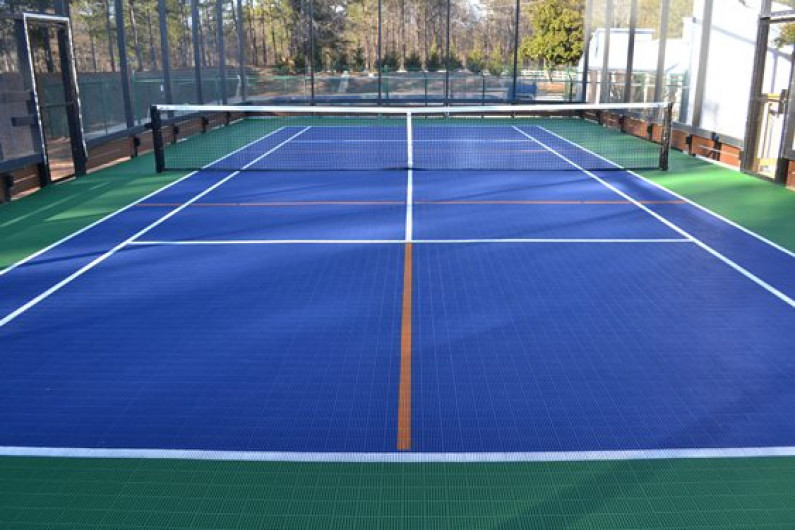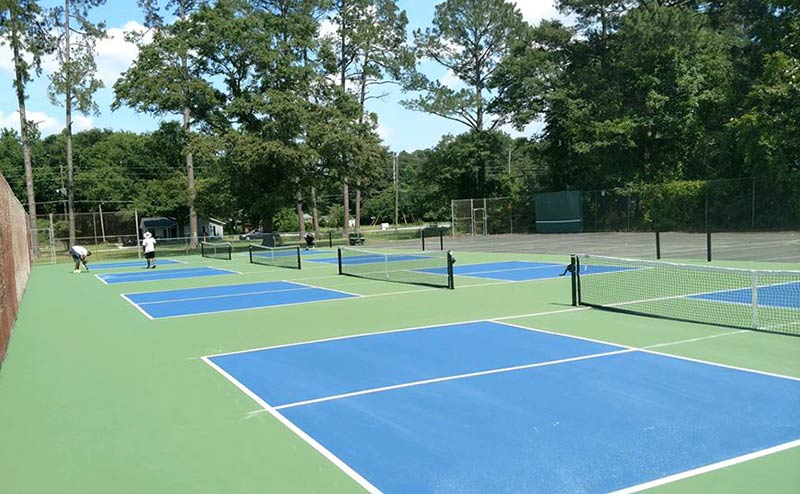Custom Pickleball Court Construction for Residential and Commercial Spaces
Custom Pickleball Court Construction for Residential and Commercial Spaces
Blog Article
Sustainable Practices in Pickleball Court Building You Ought To Know
As the popularity of pickleball continues to climb, so as well does the demand for lasting techniques in court building. The impact of these methods prolongs far past the court itself.
Selecting Eco-Friendly Materials
Selecting eco-friendly materials is an essential action in the construction of sustainable pickleball courts. The selection of lasting materials not just reduces ecological effect but additionally boosts the longevity and efficiency of the court. Key products include recycled rubber for the surface, which uses exceptional toughness and shock absorption while drawing away waste from landfills.
Additionally, utilizing locally sourced materials minimizes transportation exhausts and sustains local economic climates. Pickleball court construction. As an example, utilizing native hardwoods for secure fencing and seating can offer a sustainable aesthetic while making sure resilience versus the components.
Integrating absorptive materials for court structures can better add to sustainability by enabling for all-natural water drainage and lowering runoff. These selections not only shield local ecosystems but also promote healthier play environments.
Efficient Water Drainage Solutions
While the selection of environment-friendly materials is necessary, carrying out efficient drain services is just as important for maintaining lasting pickleball courts. Proper water drainage not only protects the court surface area from water damages yet additionally lessens erosion and drainage, promoting environmental stability.
Effective drainage systems can include permeable paving, which permits water to penetrate the ground rather than merging externally. This decreases the likelihood of standing water, which can lead to mold and mildew and various other maintenance issues. Furthermore, integrating purposefully placed water drainage channels and swales can direct excess water far from the court area, ensuring a completely dry having fun surface area and avoiding soil erosion.
Utilizing native plants in the landscaping around the courts can even more boost water drainage by absorbing excess water and minimizing drainage. These plants require less irrigation and promote biodiversity, aligning with lasting practices.
In addition, it is important to regularly maintain the drain system to ensure its long-term effectiveness. This consists of clearing debris and tracking for obstructions. By focusing on efficient drain solutions, pickleball court constructors can significantly add to the sustainability and long life of the facility, eventually profiting both gamers and the environment.
Energy-Efficient Lights Options
As the demand for pickleball remains to grow, integrating energy-efficient lighting choices into court design has actually ended up being progressively essential for sustainability. Traditional lighting systems commonly eat too much power, adding to greater operational prices and ecological impact. Adopting modern-day, energy-efficient technologies is important for both brand-new buildings and renovations.
LED (Light Emitting Diode) illumination stands out as a leading selection as a result of its longevity and energy savings (Pickleball court construction). Contrasted to conventional lights, LEDs use approximately 75% much less power and can last approximately 25 times longer, substantially decreasing upkeep expenses. find this The directional nature of LED illumination reduces light contamination, ensuring that illumination is concentrated on the court rather than bordering locations.

Sustainable Surface Alternatives
Checking out lasting surface options for pickleball courts has gotten grip amongst gamers and contractors alike. The emphasis on environment-friendly products not only aligns with the growing environmental understanding but additionally improves the performance and sturdiness of the courts.
This material provides superb shock absorption, lowering the danger of injuries for gamers while promoting sustainability. These tiles are very easy to change and set up, and their flexibility allows for different court configurations.
Natural yard courts are also becoming a sustainable option, advertising biodiversity and reducing the heat island impact. They call for regular maintenance and water, which may not line up with all sustainability objectives.

Water Conservation Strategies

One more effective method involves the installment of rain harvesting systems. These systems store and gather rainwater for usage in preserving court surface areas and landscape design. This approach not only conserves drinkable water yet likewise lowers dependence on community sources.
In addition, employing drought-resistant landscape design around the courts is important. Native plants call for much less water and are better adapted to neighborhood climate conditions, therefore lowering overall water usage. Furthermore, utilizing reliable irrigation systems, such as drip watering, makes sure that water is supplied straight to official statement plant roots, reducing dissipation and waste.
Final Thought
Including lasting techniques in pickleball court building substantially contributes to ecological conservation and resource performance. By prioritizing these techniques, the construction of pickleball courts can line up with broader environmental objectives while advertising durability and performance within communities.
As the popularity of pickleball proceeds to rise, so as well does the need for sustainable methods in court construction.Choosing environment-friendly materials is an important step in the building of lasting pickleball courts. By focusing on energy-efficient lights alternatives, pickleball court fitters can add to a much more lasting future while satisfying the needs of stakeholders and gamers alike.Including lasting surface area choices not just enhances the efficiency of pickleball courts yet likewise paves the way for implementing reliable water conservation strategies.Integrating sustainable practices in pickleball court building dramatically contributes to environmental preservation and source efficiency.
Report this page